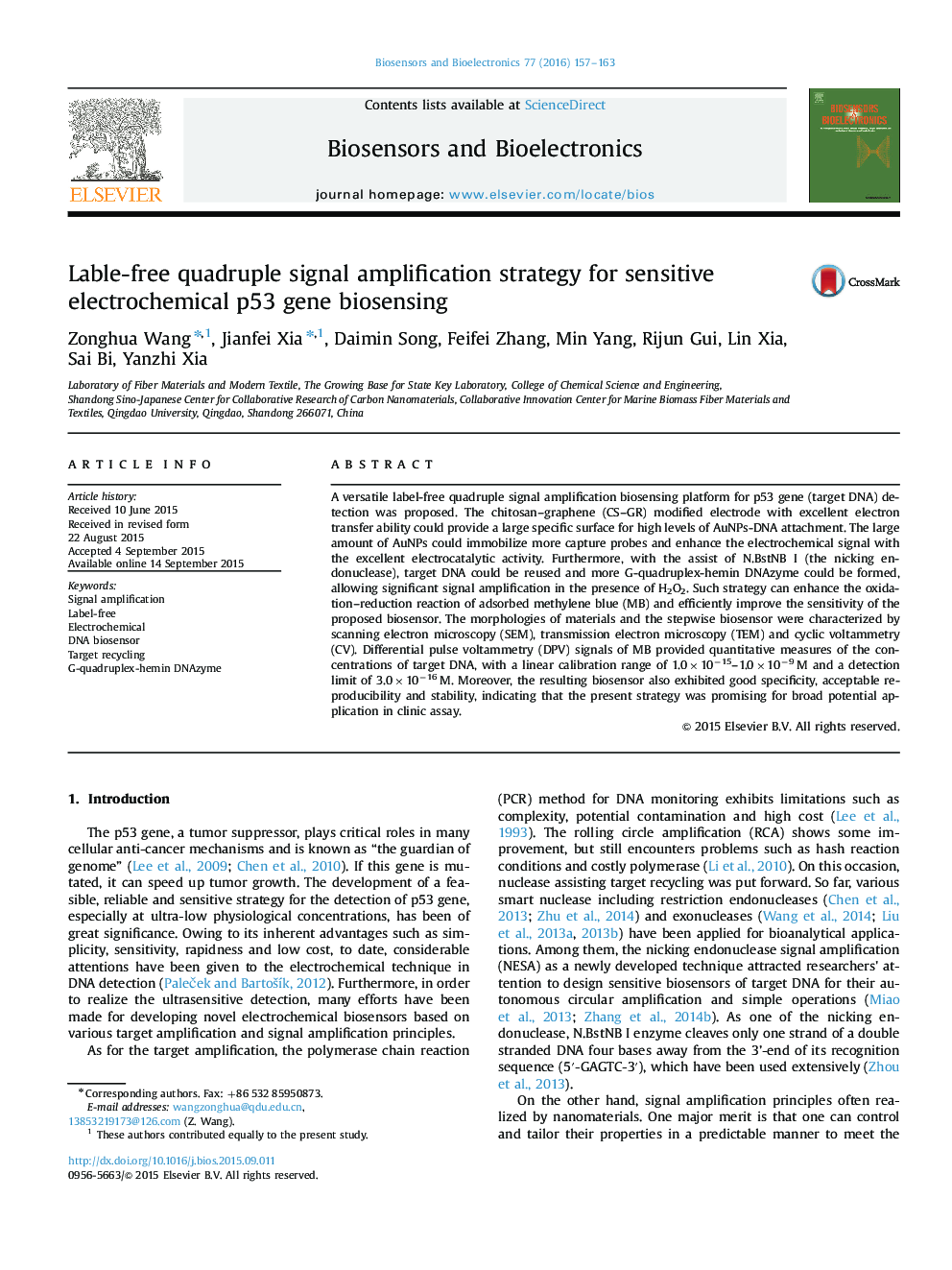| Article ID | Journal | Published Year | Pages | File Type |
|---|---|---|---|---|
| 7231304 | Biosensors and Bioelectronics | 2016 | 7 Pages |
Abstract
A versatile label-free quadruple signal amplification biosensing platform for p53 gene (target DNA) detection was proposed. The chitosan-graphene (CS-GR) modified electrode with excellent electron transfer ability could provide a large specific surface for high levels of AuNPs-DNA attachment. The large amount of AuNPs could immobilize more capture probes and enhance the electrochemical signal with the excellent electrocatalytic activity. Furthermore, with the assist of N.BstNB I (the nicking endonuclease), target DNA could be reused and more G-quadruplex-hemin DNAzyme could be formed, allowing significant signal amplification in the presence of H2O2. Such strategy can enhance the oxidation-reduction reaction of adsorbed methylene blue (MB) and efficiently improve the sensitivity of the proposed biosensor. The morphologies of materials and the stepwise biosensor were characterized by scanning electron microscopy (SEM), transmission electron microscopy (TEM) and cyclic voltammetry (CV). Differential pulse voltammetry (DPV) signals of MB provided quantitative measures of the concentrations of target DNA, with a linear calibration range of 1.0Ã10â15-1.0Ã10â9Â M and a detection limit of 3.0Ã10â16Â M. Moreover, the resulting biosensor also exhibited good specificity, acceptable reproducibility and stability, indicating that the present strategy was promising for broad potential application in clinic assay.
Related Topics
Physical Sciences and Engineering
Chemistry
Analytical Chemistry
Authors
Zonghua Wang, Jianfei Xia, Daimin Song, Feifei Zhang, Min Yang, Rijun Gui, Lin Xia, Sai Bi, Yanzhi Xia,
